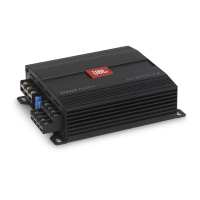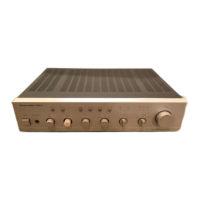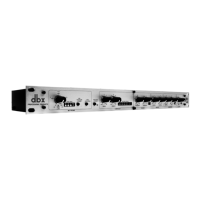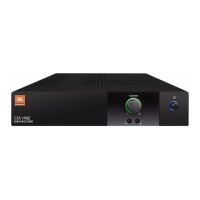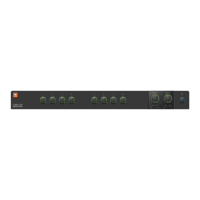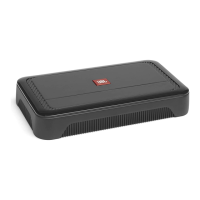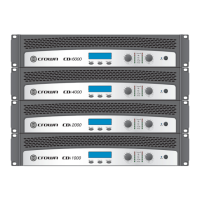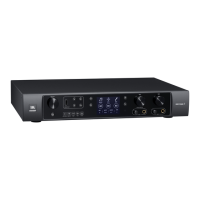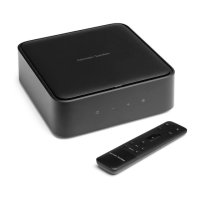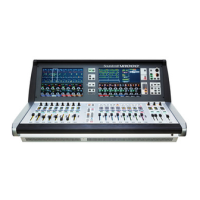
Do you have a question about the Harman Soundcraft Vi1000 and is the answer not in the manual?
Provides crucial safety information, warnings, and electrical precautions for safe operation.
Details the terms, conditions, and coverage of the Soundcraft Vi1000 product warranty.
Covers frequency response, THD, noise, EIN, CMRR, sampling, latency, DSP resolution, and clock.
Visual representation of the Vi1000's audio signal flow, inputs, processing, and outputs.
Details console rear panel I/O, main I/O slots, and user-configurable D21m expansion slots.
Explains flexibility of DANTE/MADI interfaces for recording, soundchecking, and networking.
Detailed overview of the Vistonics II touchscreen areas: Touch Area and VST Fields.
Details the Input Bay's role and the four main input channel control areas on the console.
Details the components of the input channel strip: encoders, faders, indicators, and buttons.
Covers encoder modes, VST controls for bus contributions, and input channel patching.
Details the Input touchscreen blocks for source selection, EQ, Dynamics, Busses, and Outs.
Overview of Auxiliaries, Groups, and LCR Mix busses configuration and control.
Details the LRC Bus Master faders and their dedicated controls in the Master Bay.
Explains how to configure console busses and map bus masters to input channel strips.
Describes controlling bus masters via VST encoders/faders and accessing output processing.
Describes the BSS Graphic Equalisers (GEQ) and how to access and control them.
Overview of the console's built-in, configurable matrix with up to 16 outputs and processing.
Introduction to Mute Groups (MG) and VCA Masters for controlling channel levels and muting.
Explains VCA group setup, level assignment, and solo/select functions for channel control.
Overview of the console's monitoring system with three main outputs: A, B, and Headphones.
Details monitoring controls like Solo Trim, Monitor A/B select, and headphone level.

